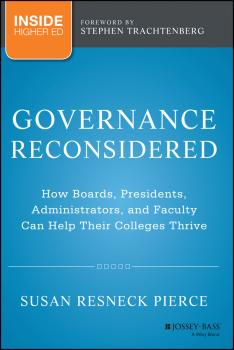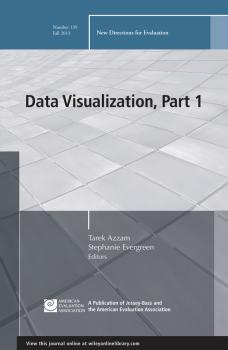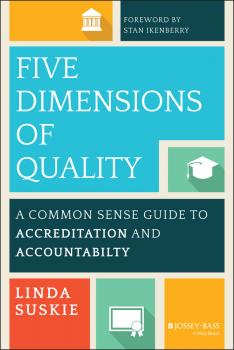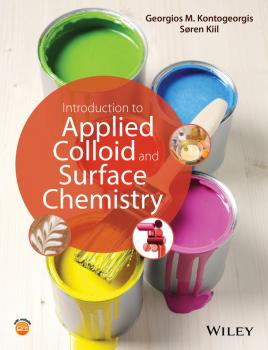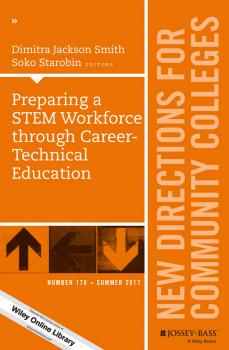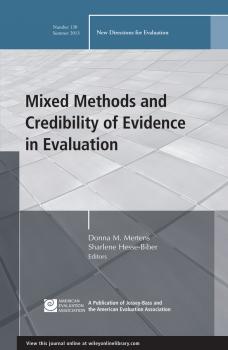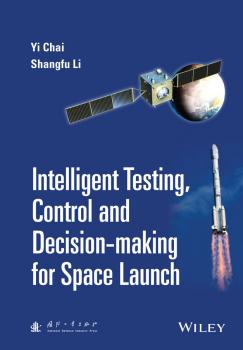Прочая образовательная литература
Различные книги в жанре Прочая образовательная литератураBioanalysis of Pharmaceuticals. Sample Preparation, Separation Techniques and Mass Spectrometry
Bioanalysis of Pharmaceuticals: Sample Preparation, Separation Techniques and Mass Spectrometry is the first student textbook on the separation science and mass spectrometry of pharmaceuticals present in biological fluids with an educational presentation of the principles, concepts and applications. It discusses the chemical structures and properties of low- and high-molecular drug substances; the different types of biological samples and fluids that are used; how to prepare the samples by extraction, and how to perform the appropriate analytical measurements by chromatographic and mass spectrometric methods. Bioanalysis of Pharmaceuticals: Sample Preparation, Separation Techniques and Mass Spectrometry: Is an introductory student textbook discussing the different principles and concepts clearly and comprehensively, with many relevant and educational examples Focuses on substances that are administered as human drugs, including low-molecular drug substances, peptides, and proteins Presents both the basic principles that are regularly taught in universities, along with the practical use of bioanalysis as carried out by researchers in the pharmaceutical industry and in hospital laboratories Is aimed at undergraduate students, scientists, technicians and researchers in industry working in the areas of pharmaceutical analyses, biopharmaceutical analyses, biological and life sciences The book includes multiple examples to illustrate the theory and application, with many practical aspects including calculations, thus helping the student to learn how to convert the data recorded by instruments into the real concentration of the drug substances within the biological sample.
Governance Reconsidered. How Boards, Presidents, Administrators, and Faculty Can Help Their Colleges Thrive
Revamp senior administration organization for more effective governance Governance Reconsidered: How Boards, Presidents, Administrators, and Faculty Can Help Their Colleges Thrive takes an in-depth look at the current practice of governance in higher education and explores solutions for more effective functioning. Written by a former college president, the book provides an insider's perspective on the growing tensions around the traditional shared governance model and identifies the key challenges facing trustees, presidents, senior administrators, and faculty. Traditional shared governance operations are typically time-consuming, process-laden, and slow to respond to the internal and external forces acting upon modern educational institutions. Higher education is facing increasing political and economic pressure, and senior administration frequently needs the flexibility to make institutional decisions quickly. Using recent public scandals as examples, Governance Reconsidered illustrates how the tension between the need for timely decisions and action versus the importance of mission and academic quality is creating a dramatic systemic problem. The book provides practical advice on the issues at the heart of the matter, including: The nature and pace of change on campus, including the pressures facing higher education Clarity about the roles and responsibilities of trustees, the president, and the faculty The campus community's role in decision-making activities How thriving universities can govern collaboratively The book also addresses the brand new challenges that affect higher education governance, including MOOCs, online learning, and rising questions about value and cost. Campus leaders must work together effectively to boost higher education, and Governance Reconsidered contains the questions and answers integral to implementing effective governance.
Data Visualization, Part 1. New Directions for Evaluation, Number 139
Do you communicate data and information to stakeholders? This issue is Part 1 of a two-part series on data visualization and evaluation. In Part 1, we introduce recent developments in the quantitative and qualitative data visualization field and provide a historical perspective on data visualization, its potential role in evaluation practice, and future directions. It discusses: Quantitative visualization methods such as tree maps Sparklines Web-based interactive visualization Different types of qualitative data visualizations, along with examples in various evaluation contexts A toolography describing additional data visualization tools and software, along with their major strengths and limitations. Intended as a guidance for understanding and designing data visualizations, this issue introduces fundamental concepts and links them to daily practice. This is the 139th volume of the Jossey-Bass quarterly report series New Directions for Evaluation, an official publication of the American Evaluation Association.
Five Dimensions of Quality. A Common Sense Guide to Accreditation and Accountability
Meet calls for increased quality and understand accreditation expectations Author Linda Suskie is internationally recognized for her work in higher education assessment, and she is a former vice president of a major regional accreditor. In Five Dimensions of Quality: A Common Sense Guide to Accreditation and Accountability in Higher Education she provides a simple, straightforward model for understanding and meeting the calls for increased quality in higher education ever-present in today's culture. Whether your institution is seeking accreditation or not, the five dimensions she outlines will help you to identify ways to improve institutional quality and demonstrate that quality to constituents. For those wading through the accreditation process, which has become more difficult in recent years due to increasing regulation and pressure for greater accountability, Suskie offers expert guidance on understanding the underlying principles of the expectations of accrediting bodies. Using the model presented here, which is much easier to understand than the sometimes complex resources provided by individual accrediting bodies, American colleges and universities can understand what they need to do to earn and maintain their regional accreditation as well as improve overall institutional quality for their students. You'll be able to: Identify ways to improve institutional quality Demonstrate the quality of your institution to internal and external constituents Avoid wasting time and energy on misguided institutional processes to comply with accreditation requirements By focusing on why colleges and universities should take particular actions rather than only on what those actions should be, Five Dimensions of Quality gives them the knowledge and strategies to prepare for a successful review. It is an ideal resource for leaders, accreditation committee members, and everyone on campus.
Atmospheric Chemistry and Physics. From Air Pollution to Climate Change
Expanded and updated with new findings and new features New chapter on Global Climate providing a self-contained treatment of climate forcing, feedbacks, and climate sensitivity New chapter on Atmospheric Organic Aerosols and new treatment of the statistical method of Positive Matrix Factorization Updated treatments of physical meteorology, atmospheric nucleation, aerosol-cloud relationships, chemistry of biogenic hydrocarbons Each topic developed from the fundamental science to the point of application to real-world problems New problems at an introductory level to aid in classroom teaching
Introduction to Applied Colloid and Surface Chemistry
Colloid and Surface Chemistry is a subject of immense importance and implications both to our everyday life and numerous industrial sectors, ranging from coatings and materials to medicine and biotechnology. How do detergents really clean? (Why can’t we just use water ?) Why is milk “milky” Why do we use eggs so often for making sauces ? Can we deliver drugs in better and controlled ways? Coating industries wish to manufacture improved coatings e.g. for providing corrosion resistance, which are also environmentally friendly i.e. less based on organic solvents and if possible exclusively on water. Food companies want to develop healthy, tasty but also long-lasting food products which appeal to the environmental authorities and the consumer. Detergent and enzyme companies are working to develop improved formulations which clean more persistent stains, at lower temperatures and amounts, to the benefit of both the environment and our pocket. Cosmetics is also big business! Creams, lotions and other personal care products are really just complex emulsions. All of the above can be explained by the principles and methods of colloid and surface chemistry. A course on this topic is truly valuable to chemists, chemical engineers, biologists, material and food scientists and many more.
Preparing a STEM Workforce through Career-Technical Education. New Directions for Community Colleges, Number 178
This volume examines STEM education, preparation, and career exploration–and the role of career and technical education (CTE) in preparing individuals for the STEM workforce. Highlighting avenues for success and exemplary practices, the volume covers topics such as: 1) Incorporating experiential learning activities for students in CTE-STEM programs, 2) Providing avenues and effective strategies for closing the skills gap for students in CTE-STEM through funding and evaluation and assessment activities, 3) Highlighting the experiences of women in CTE-STEM related programs, and 4) Implications for policy and practice. This is the 178th volume of this Jossey-Bass quarterly report series. Essential to the professional libraries of presidents, vice presidents, deans, and other leaders in today's open-door institutions, New Directions for Community Colleges provides expert guidance in meeting the challenges of their distinctive and expanding educational mission.
Ultrasonic Technology for Desiccant Regeneration
The chapters in this volume explore ultrasound-assisted regeneration of silica gel, ultrasound-assisted regeneration for a new honeycomb desiccant material, ultrasound-atomizing regeneration for liquid desiccants, ultrasonic transducers, and much more.
Mixed Methods and Credibility of Evidence in Evaluation. New Directions for Evaluation, Number 138
Mixed methods in evaluation have the potential to enhance the credibility of evaluation and the outcomes of evaluation. This issue explores advances in understanding mixed methods in philosophical, theoretical, and methodological terms and presents specific illustrations of the application of these concepts in evaluation practice. Leading thinkers in the mixed methods evaluation community provide frameworks and strategies that are associated with improving the probability of reaching the goals of enhanced credibility for evaluations, the evidence they produce, and the actions taken as a result of the evaluation findings. This is the 138th volume of the Jossey-Bass quarterly report series New Directions for Evaluation, an official publication of the American Evaluation Association.
Intelligent Testing, Control and Decision-making for Space Launch
A comprehensive exposition of the theory and techniques of fault identification and decision theory when applied to complex systems shows how modern computer analysis and diagnostic methods might be applied to launch vehicle design, checkout, and launch the space checkout system is a specialized area which is rarely explored in terms of the intelligent techniques and approaches involved an original view combining modern theory with well-established research material, inviting a contemporary approach to launch dynamics highlights the advanced research works in the field of testing, control and decision-making for space launch presented in a very well organized way and the technical level is very high

